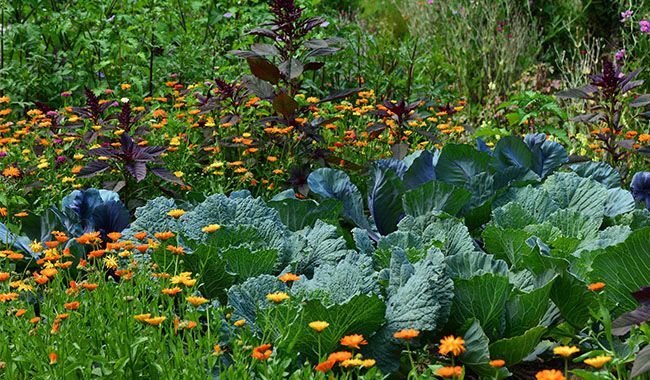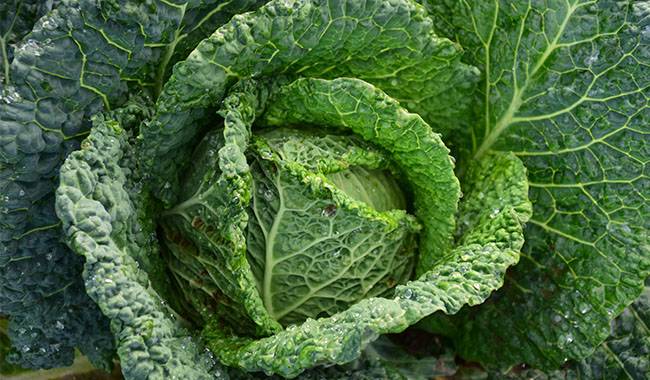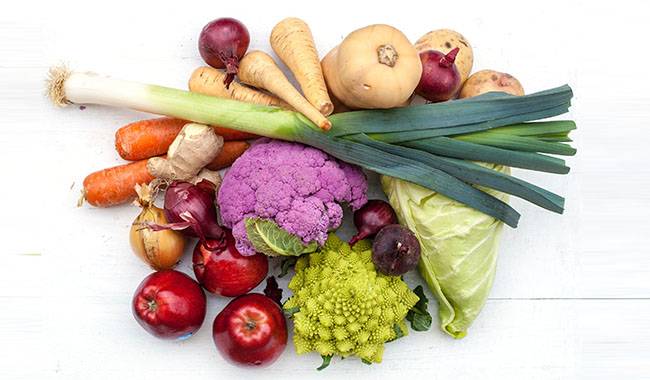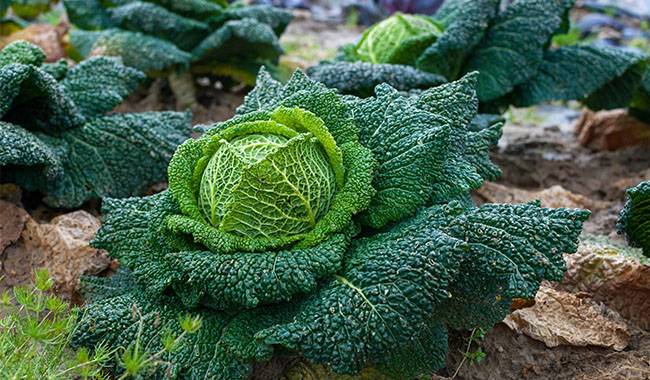
Cabbage is one of the most popular vegetable crops in our garden. Cabbage is grown in almost every country in the world and is used both fresh and in a variety of processed products.
Cabbage is always successful of producing abundant harvests, but in some years, the yield may below. Fluctuations in cabbage yields may depend on the characteristics of the current growing season and the incompetence of gardeners with this crop.
We’ll talk today about how to properly cabbage plant care and what to do in what months.
CABBAGE PLANT CARE IN MAY
Preparing seedlings for sowing
Cabbage seedlings should be prepared before planting in the open ground by regulating watering, feeding, and hardening activities.
Watering of seedlings should be completely stopped 6-8 days before planting into the ground, but before planting (3 hours before planting), the seedlings should be watered as much as possible so that the earth is completely moist.
Before that, about 15 days before transplanting into the ground, the sprouts should be fertilized with urea and potassium sulfate, for which 15 g of each of these fertilizers should be dissolved in 10 liters of water, and a solution of 150 g per plant should be used.
Three weeks before planting seedlings in the ground must be hardened, and for this purpose, the seedlings should be hardened in the garden or on the outdoor terrace, first for 20 minutes, then for one hour, so that a few hours are added each day to reach the seedlings that stay in the open air for a day.
Age of seedlings available for planting
Seedlings can be planted on the plot when she forms two pairs of true leaves, reaches a height of 4inch (10 cm), reaches an age of 42-44 days, and the temperature outside the window rises to -57°F (14-16°C) and stabilizes.
Seedling planting time
Typically, cabbage seedlings are planted in May. This should be done in the afternoon, preferably not in dry and hot weather, but in cool and cloudy weather.
Preparing the soil
Before planting, the plot should be dug to the full snag of the shovel, all weeds removed and a bucket of humus and a tablespoon of urea, calcium superphosphate, and wood ash (for the same area) introduced per square meter under the dug-out soil.
As for the best soil, loamy soils are suitable for cabbage growth and necessarily have a neutral reaction of acidity.
Fertilize the soil
If you do not have enough organic fertilizers, you can save them by applying them directly into the planting holes. To do this, you need to make them 20% more than the volume of the roots and add 200 grams of humus and 150 grams of wood ash to them.
Planting the seedlings
In this well, the seedlings should be planted with the soil of the root ball after pre-watering. The planting plan for early varieties of cabbage should be 14-16.5inch (36-42 cm) between rows and 10-12inch (26-29 cm) between plants in the row.
Late varieties should be planted more sparsely in a row, leaving 17-19inch (45-48 cm) between plants.
Sun protection
The seedlings should be shaded from the sun for a week after planting.
Watering
After planting, cabbage plants should be watered every three days, or two liters of water under each plant if there is no rain.
Loosening
The day after watering and after rain, gently loosen the soil around the sprouts to avoid crusting. Loosening the soil will help to normalize the exchange of air and water, in addition to reducing the risk of crusting.
Mulch
After watering, it is best to cover the soil completely with hummus. This can be placed as a 0.4inch (1cm) layer. Mulch conserves irrigation water in the soil, slows the formation of crusts on the soil surface, and minimizes weed growth.
Weed control
Don’t forget to control weeds. It is the best time to be done by hand after rain or after heavy watering. Weeds are easier to pull out of moist soil.
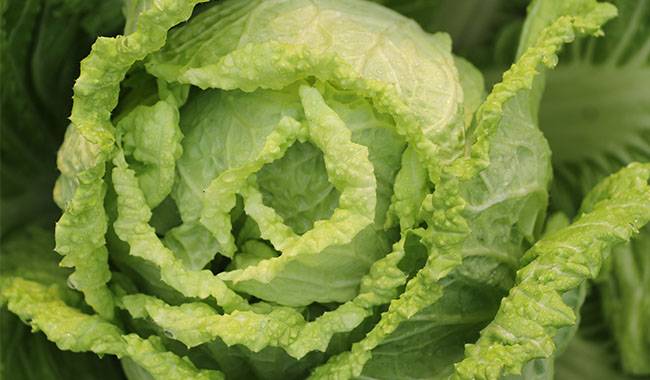
CABBAGE PLANT CARE IN JUNE
Fertilization
The first feeding in June should be done around the end of the first decade of the month. At this time, the plants should be provided with nitro phosphate dissolved in water. Add one tablespoon of triphosphate for every 10 liters of water. This amount of solution should be enough for 10 cabbage plants.
It is possible to use an infusion of cow manure, diluted 10 times with water, or poultry manure, diluted 12 times with water. The consumption rate is half a liter per cabbage plant down.
It is necessary to make a second feeding 10 days after the first feeding. Ammonium nitrate (20 grams per square meter), superphosphate (15 grams per square meter), and potassium sulfate (18 grams per square meter) are ideal.
Slug control
In June, slugs and snails appear on cabbages. Spread a 2-3 mm layer of wood ash around the cabbage to get rid of them. You can also lay iron sheets, cardboard, plastic, slate – slugs will gather under them and can then be removed.
Mulch
Around the middle of the month, the plants should be dug out a few inches. This will strengthen the cabbage plants in the ground and promote the formation of additional root systems, which will increase plant nutrition and help improve yields.
Watering
During the month, water once a week if the temperature does not exceed 77°F (25°C), or twice a week if the temperature is higher. One bucket of water should be watered for every square meter of soil occupied underneath the cabbage.
CABBAGE PLANT CARE IN JULY
Watering
July is usually hotter than June and cabbage needs more water, so water in the evening and every fifth day, spending one and a half buckets of water per square meter.
If temperatures rise above 86°F (30°C), the watering interval should be reduced to three days, reducing the amount of watering to one bucket per square meter.
When the sprouts begin to set, watering should be doubled, maintaining the watering interval.
Loosening
Make sure to loosen the soil the day after watering.
Mulch
Cover the soil with a layer of 1.5-2.5inch (4-6cm) of humus to retain soil moisture.
Control diseases and pests
To control cabbage pests such as fleas and slugs, sprinkle wood ash with tobacco powder on the cabbage and the soil around it. For 200 grams of wood ash, you will need 50 grams of tobacco powder.
To control aphids and chard moth caterpillars, you need to treat cabbage plants with the following ingredients: 5 kg of tomato tops per bucket of water.
You must first let the relevant ingredients soak for three hours, then boil for three hours, cool, strain, dilute half with water and add 50 grams of laundry soap before use, which will act as an adhesive.
It is also possible to use onion shells against caterpillars. To do this, 200 grams of onion shells should be placed in a liter of boiling water and allowed to soak for several days. The mixture must then be strained, diluted by half with water, add 50 grams of laundry soap, stir well and you are ready to treat with cabbage.
CABBAGE PLANT CARE IN AUGUST
In August, help cabbage gain mass and accumulate useful substances.
Watering
Watering is necessary and the soil should be moderately moist. It is best to moisten the soil every other day, watering five liters of water per square meter. Water at room temperature and leave it at night.
Fertilization
At the beginning of the month, kale should be fertilized with dry fertilizer, loosening the soil and watering thoroughly beforehand. One tablespoon of urea, half a tablespoon of calcium superphosphate, and one-third of a tablespoon of potassium sulfate per square meter should be applied.
After a week, you can spray the plants with magnesium sulfate, dissolve 2 grams of magnesium sulfate in a bucket of water, this ratio per square meter.
Cut grass
Before the first leaf, if it has not been done before, you should weed the cabbage.
Pest control
In August, it is necessary to continue to control caterpillars and slugs with the above compounds. In addition, calcium superphosphate and potassium sulfate dissolved in water can be used to control caterpillars. This ingredient should be set at 0.3%.
Harvesting
In early August, early varieties of cabbage are usually harvested.
CABBAGE PLANT CARE IN SEPTEMBER
Watering
It is necessary to continue watering, but do not abuse the water, the soil must be kept moist. From the end of the first decade of September, it is recommended to stop watering.
Harvesting
In September, harvesting of medium and late varieties of cabbage usually begins. There is no need to rush the harvest – medium varieties can be harvested in mid-September, late varieties – at the end of September.
The main thing is to have time before frost, otherwise cabbage will not be able to be stored. Harvesting can begin as soon as nighttime temperatures drop to 35°F (2°C).
Unlike early varieties, which can be used immediately, mid-and late-maturing varieties should be put in storage. To improve the storability of cabbage, it is necessary to cut off a few leaves of the plant and ensure that the core is retained.
Place the cabbage in a dark and ventilated room at a temperature of around 32°F (0°C). Cabbage stores well in a hanging state or in a wooden box.
CONCLUSION
We have described all the care measures for cabbage season. By following all the recommendations correctly, you will be able to grow a complete crop of this kind.
We remind you that depending on the region and the conditions of the current season, the time of cabbage growth and harvest may shift in one direction.





